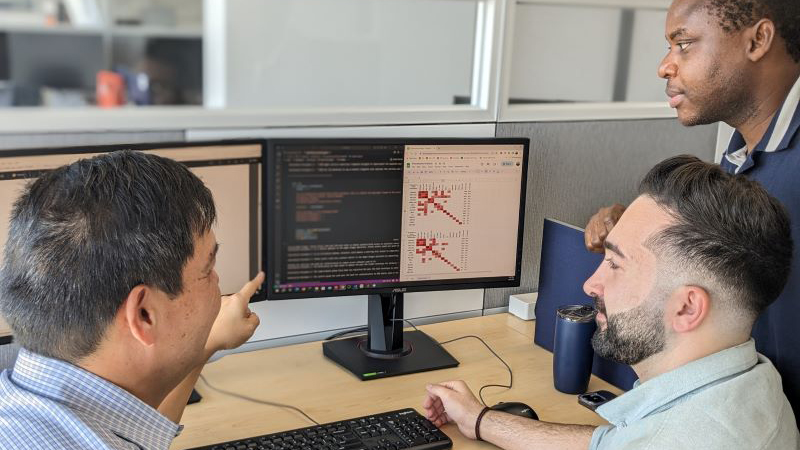
Shanchieh Yang
Research Professor
Shanchieh Yang
Research Professor
Education
BS, National Chiao-Tung University (Taiwan); MS, Ph.D., University of Texas at Austin
Bio
Dr. Shanchieh (Jay) Yang received his BS degree in Electronics Engineering from National Chaio-Tung University in Taiwan in 1995, and MS and Ph.D. degrees in Electrical and Computer Engineering from the University of Texas at Austin in 1998 and 2001, respectively. He is currently a Professor in Computer Engineering and the Director of Global Outreach for Global Cybersecurity Institute at Rochester Institute of Technology. His research focuses on advancing machine learning, modeling, and simulation for predictive cyber intelligence and anticipatory cyber defense. His research group has been supported by NSF, IARPA, DARPA, NSA, AFRL, ONR, and ARO. His earlier work introduced Variable Length Markov Models (F-VLMM), Virtual Terrain (VTAC), and Attack Social Graphs (ASG) for predictive cyber situation awareness (FuSIA, VTAC, & ViSAw). More recently, his team develops a holistic body of work that contains ASSERT to continuously learn and update emerging statistical attack models, CASCADES to simulate synthetic scenarios grounded with a theoretical understanding of adversary behaviors, and CAPTURE to forecast cyberattacks using unconventional signals in the public domain. He was a 2019 NSF Trusted CI Open Science Fellows and a 2020 NSF Trusted CI TTP Fellow. He received IEEE Region 1 Outstanding Teaching in an IEEE Area of Interest Award for outstanding leadership and contributions to cybersecurity and computer engineering in 2019. He received Norman A. Miles Award for Academic Excellence in Teaching in 2007, and was also a co-chair for IEEE Joint Communications and Aerospace Chapter in Rochester NY in 2005, when the chapter was recognized as an Outstanding Chapter of Region 1. As an innovative and collaborative leader in academia, he has also established several international partnership programs and collaborations with universities across Europe and Asia.
Select Scholarship
- A. Nadeem, S. Verwer, S. Moskal, and S. J. Yang, “Alert-driven Attack Graph Generation using S-PDFA,” in IEEE Transactions on Dependable and Secure Computing, 2021, doi: 10.1109/TDSC.2021.3117348.
- S. Moskal and S. J. Yang, “Translating Intrusion Alerts to Cyberattack Stages using Pseudo-Active Transfer Learning,” in Proceedings of IEEE Conferences on Communications and Network Security, Oct 4-6, 2021.
- C. Sweet, S. Moskal, and S. J. Yang, “On the Variety and Veracity of Cyber Intrusion Alerts Synthesized by Generative Adversarial Networks,” ACM Transactions on Management Information Systems, Special Issue on Analytics for Cybersecurity and Privacy, Vol.11, Issue 4, No. 22, December 2020, https://dl.acm.org/doi/abs/10.1145/3394503
- A. Okutan and S. J. Yang, “ASSERT: Attack Synthesis and Separation with Entropy Redistribution towards Predictive Cyber Defense”, Springer Journal on Cybersecurity, 2:15, May 2019.
- S. Moskal, S. J. Yang, and M. Kuhl, “Cyber Threat Assessment via Attack Scenario Simulation using an Integrated Adversary and Network Modeling Approach,” Journal of Defense Modeling and Simulation, Vol. 15, No.1, pp.13-29, 2018.
- S. J. Yang, H. Du, J. Holsopple, and M. Sudit, “Attack Projection for Predictive Cyber Situation Awareness,” book chapter in A. Kott, R. Erbacher, and C. Wang (Eds.), Cyber Defense and Situational Awareness, Springer, pp. 239-261, 2014.
- S. J. Yang, A. Stotz, J. Holsopple, M. Sudit, and M. Kuhl, “High Level Information Fusion for Tracking and Projection of Multistage Cyber Attacks,” Elsevier International Journal on Information Fusion, Vol. 10, No. 1, pp.107-121, January 2009.
- D. Fava, S. Byers, S. J. Yang, “Projecting Cyber Attacks through Variable Length Markov Models,” IEEE Transactions on Information Forensics and Security, Vol. 3, No. 3, pp.359-369, September 2008.
In the News
-
September 10, 2024

ChatGPT 4 can exploit 87% of one-day vulnerabilities: Is it really that impressive?
Security Intelligence speaks with Shanchieh Yang, director of research at RIT's ESL Global Cybersecurity Institute, about ChatGPT 4's ability to exploit cybersecurity vulnerabilities.
-
November 9, 2022

RIT researcher brings together cybersecurity experts from U.S., Ireland, and Northern Ireland
Professor S. Jay Yang sees collaboration as the key to combating international cybersecurity threats. That’s why the director of global outreach for RIT’s ESL Global Cybersecurity Institute is helping lead an alliance of cybersecurity researchers from the U.S., Northern Ireland, and the Republic of Ireland.
-
August 6, 2019

Global Cybersecurity Institute to open in 2020
Cybercrime is costing the world trillions of dollars, and analysts say that there aren’t enough qualified professionals to prevent those attacks. To address this problem, RIT is creating the Global Cybersecurity Institute (GCI), aimed at meeting the demand for computing security and artificial intelligence professionals, while developing future technologies, protocols and human understanding needed to address the global cybersecurity crisis.
Featured Work
RIT Research Team Enhances Cybersecurity Training with AI Innovations
Shanchieh Yang
Professor Yang and his team are creating a cutting-edge training program using the Cyber Range to integrate Large Language Models into cybersecurity operations, aiming to dispel myths and improve...
